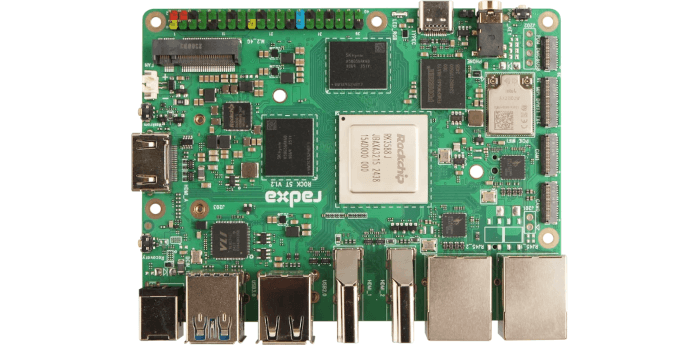This is a series looking at the Radxa ROCK 5T single board computer. It’s billed as an elegant single board computer (SBC) with 8K + 4K dual display. The SBC is based on the Rockchip RK3588(J) SoC in a compact form factor packed with a wide range of class-leading functionality, features and expansion options. The RK3588 is a low power 8-core 64-bit processor that is ARM-based.
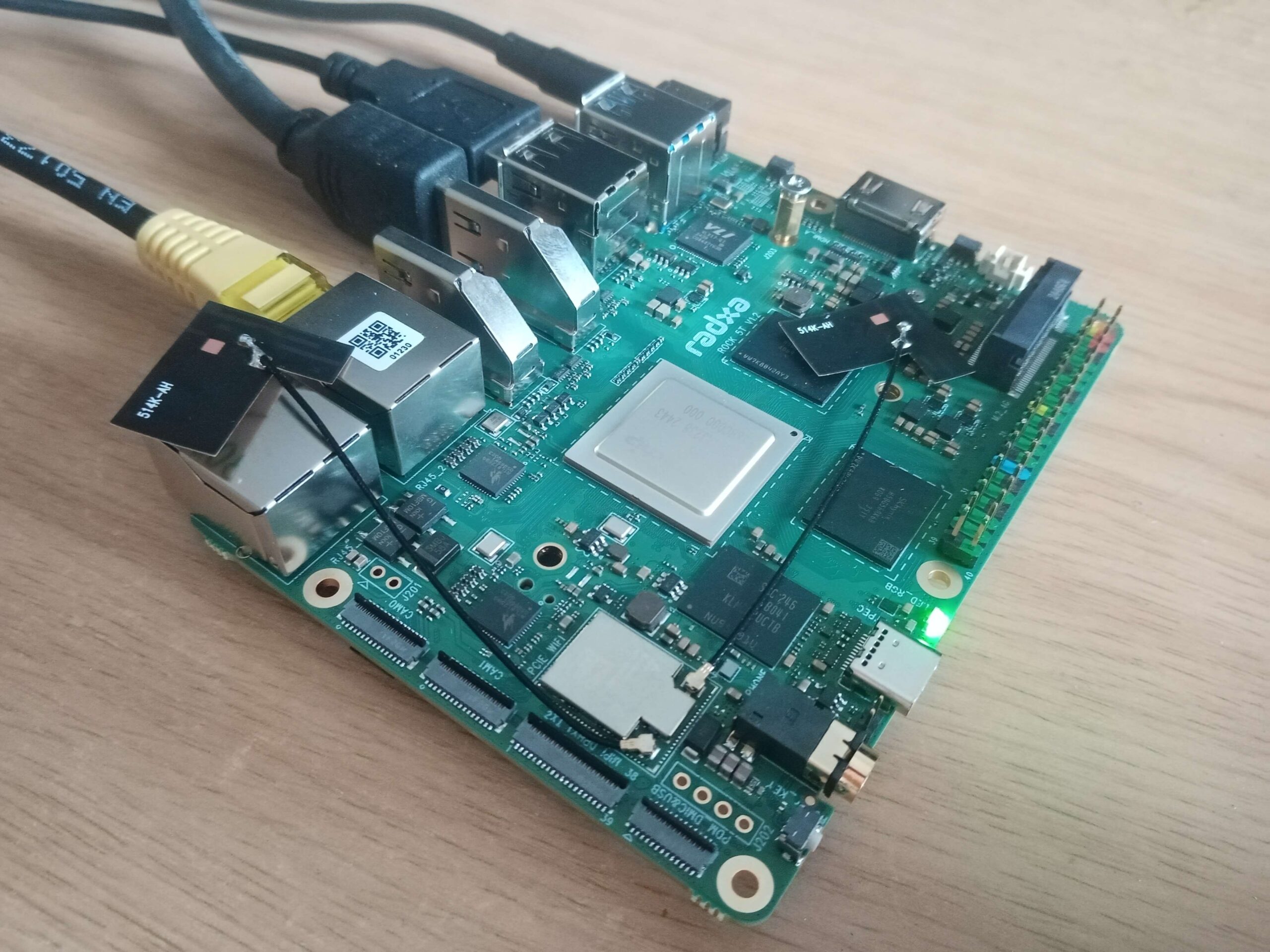
In this article I benchmark the Radxa ROCK 5T and compare it to a variety of single board computers (both ARM and RISC-V) as well as an Intel N100 Mini PC. The tests are run using the Phoronix Test Suite unless stated otherwise.
I’ll mainly focus on processor benchmarks for this article, but there are a few other tests included (graphics and memory).
Explanation of the legends used in the charts below:
RPI5 – Raspberry Pi 5 (ARM architecture)
OPi RV2 – Orange Pi RV2 (RISC-V architecture)
N100 – Intel N100 (x86_64 architecture)
OPi5 Max – Orange Pi 5 Max (ARM)
OPi R2S – Orange Pi R2S (RISC-V)
BPI-F3 – Banana Pi BPi-F3 (RISC-V )
AIBOX-3588S – Firefly AIBOX-3588S (ARM)
ROCK 5T – Radxa ROCK 5T (ARM)
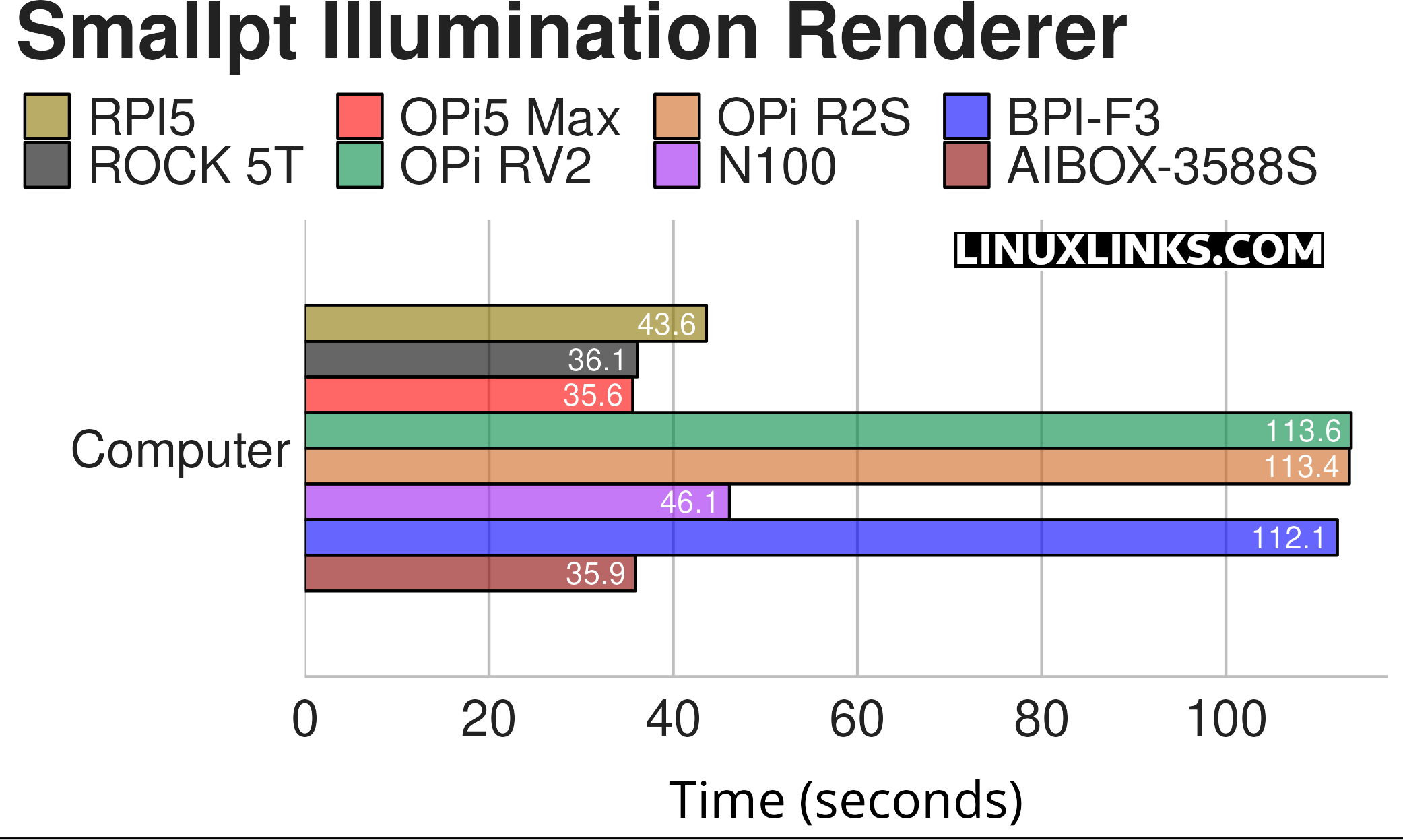
$ phoronix-test-suite benchmark smallpt
Smallpt is a C++ global illumination renderer written in less than 100 lines of code. Global illumination is done via unbiased Monte Carlo path tracing and there is multi-threading support via the OpenMP library.
With this benchmark, a shorter time indicates better performance.
The ROCK 5T is only narrowly pipped by the AIBOX-358SS and the Orange Pi 5 Max, and completes the benchmarks comfortably faster than the Intel N100 as well as the Raspberry Pi 5. The RISC-V boards lag a long long way behind.
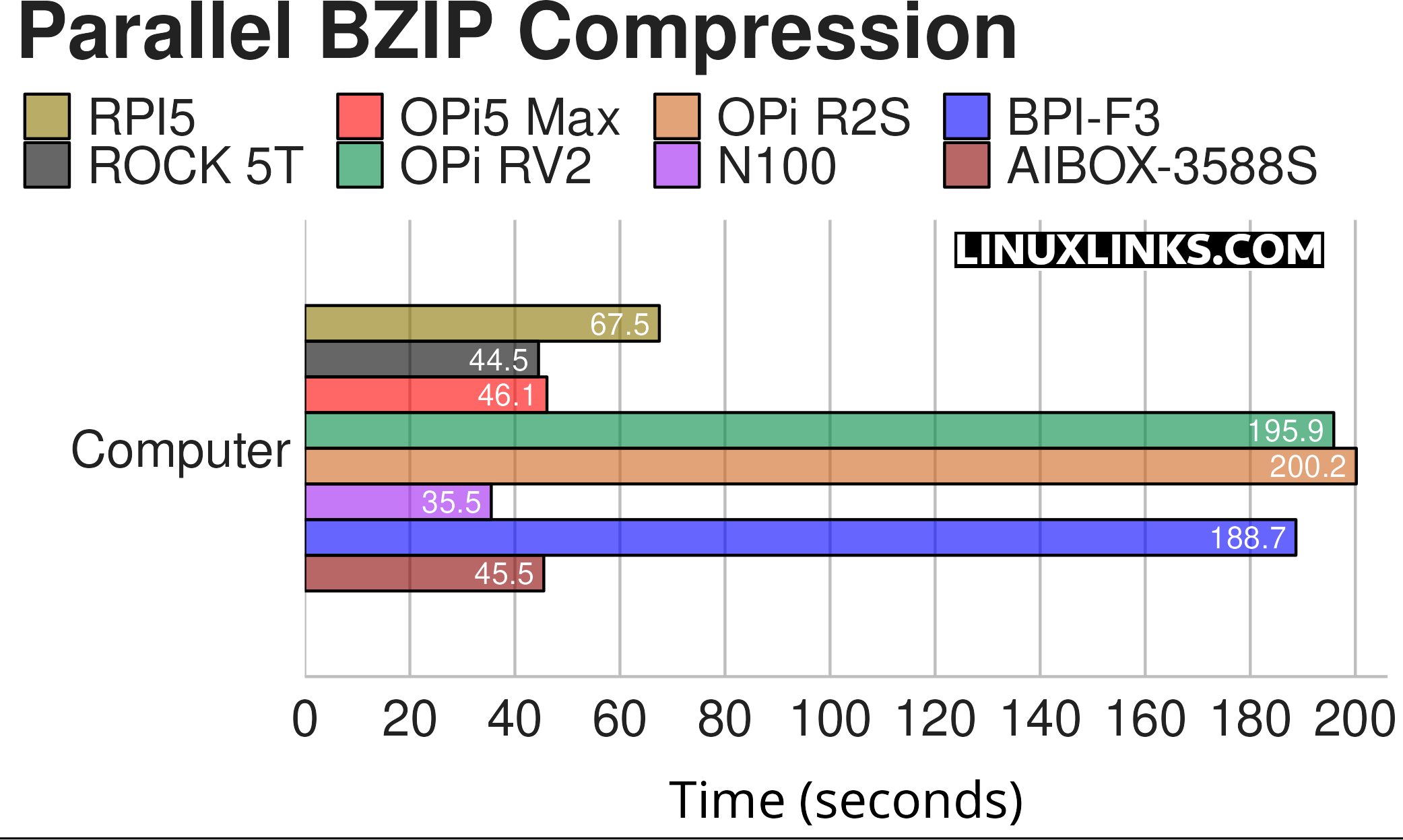
$ phoronix-test-suite benchmark compress-pbzip2
This test measures the time needed to compress a file (a .tar package of the Linux kernel source code) using BZIP2 compression.
Again a shorter time indicates better performance. In this benchmark, the N100 is the most performant, but the ROCK 5T beats the other ARM-based boards. The RISC-V boards are far far away.
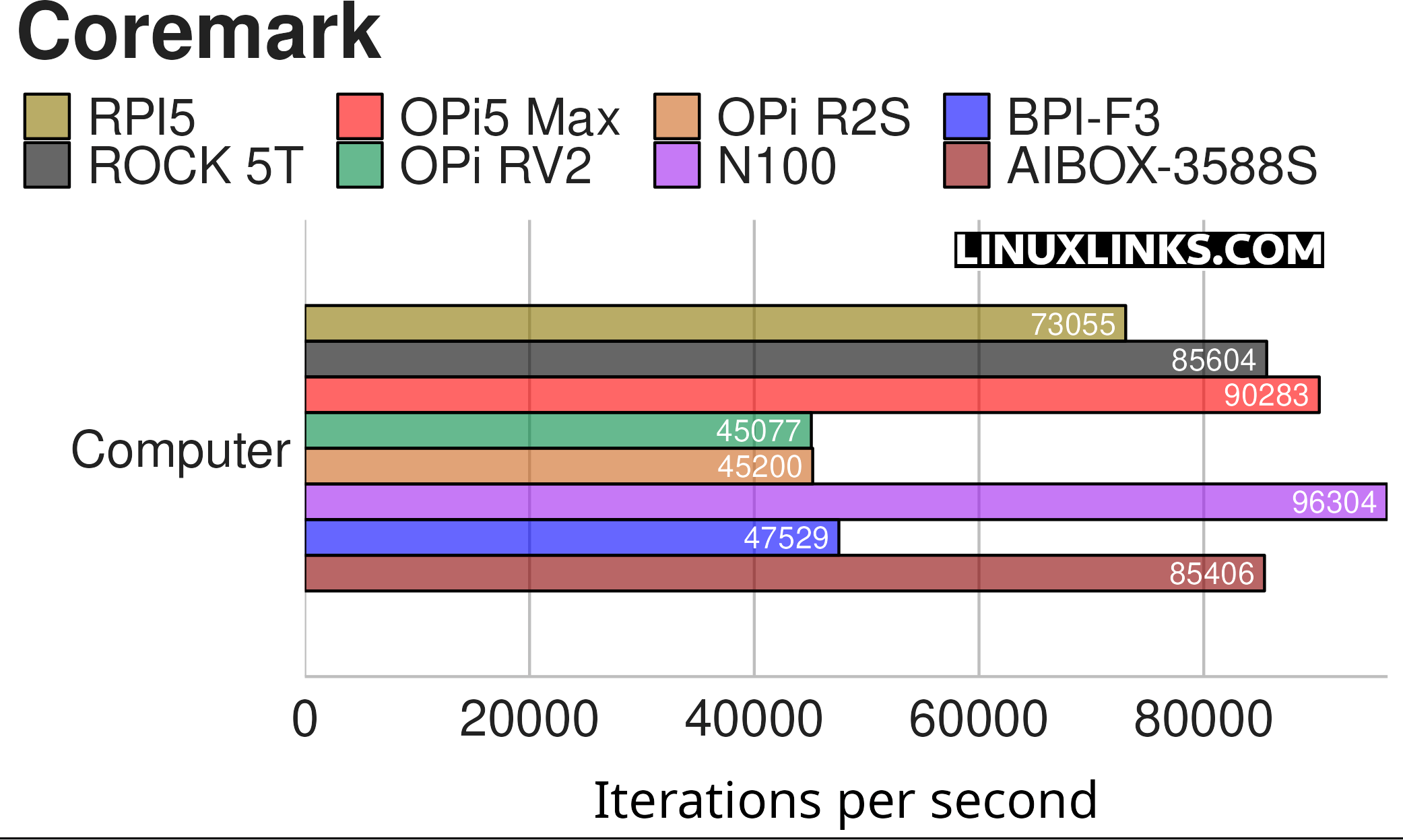
$ phoronix-test-suite benchmark coremark
Coremark is a benchmark that measures the performance of central processing units (CPU) used in embedded systems. Another good result for the ROCK 5T.
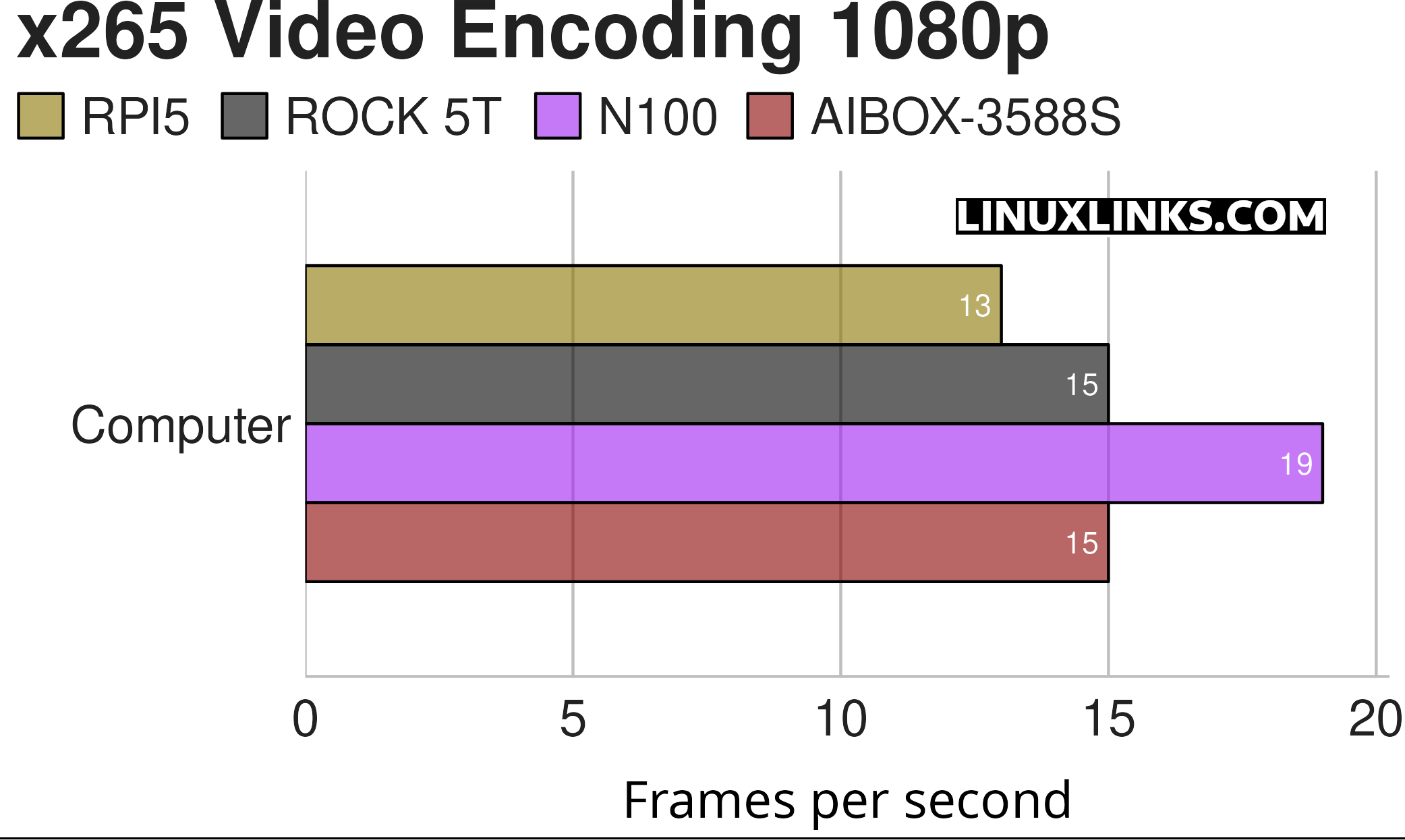
$ phoronix-test-suite benchmark x265
This is a simple test of the x265 encoder run on the CPU with 1080p and 4K options for H.265 video encode performance with x265.
The results are nothing to write home about for any of these machines.

And the same here.
Let’s take a look at a graphics benchmark, glmark2, an OpenGL 2.0 and ES 2.0 benchmark. Here are the results.
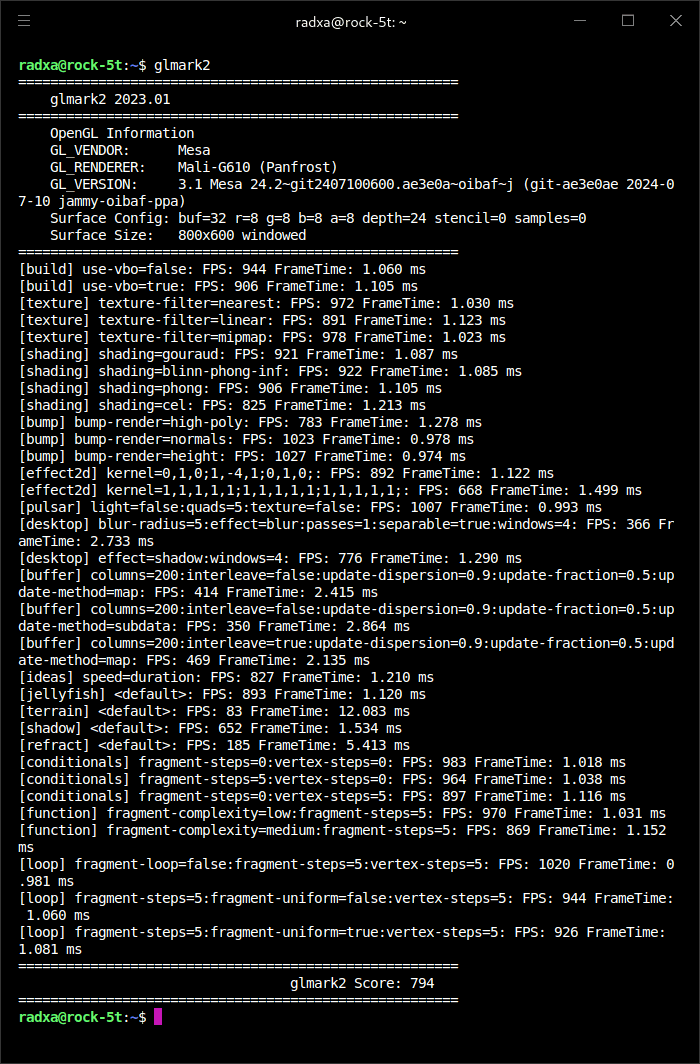
I ran the benchmark with the default Panfrost/Panthor GPU driver. The ROCK 5T also has the option of switching the GPU driver to Mali. This involves using Rockchip’s proprietary xorg-xserver.
Let’s now test the RAM.
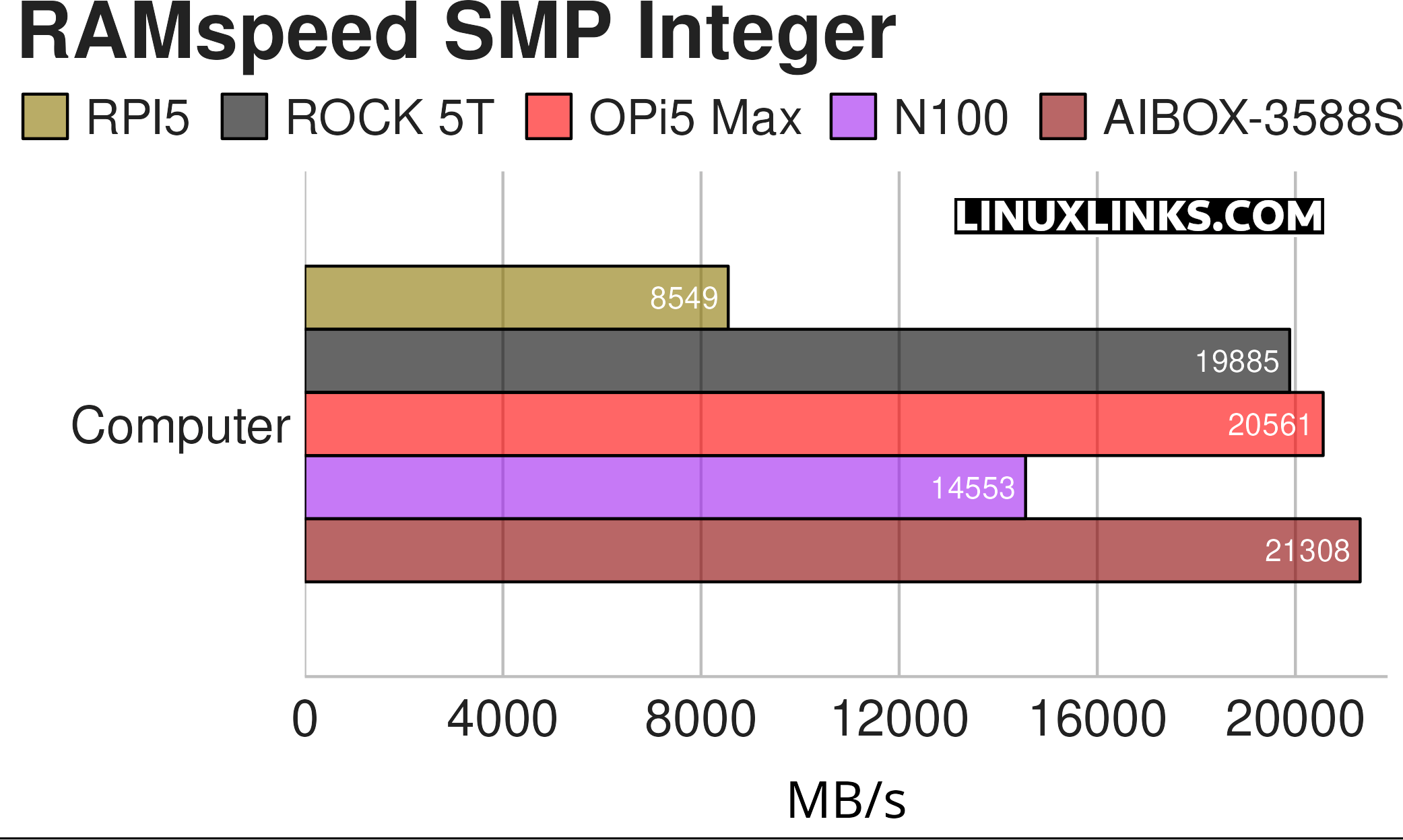
$ phoronix-test-suite benchmark ramspeed
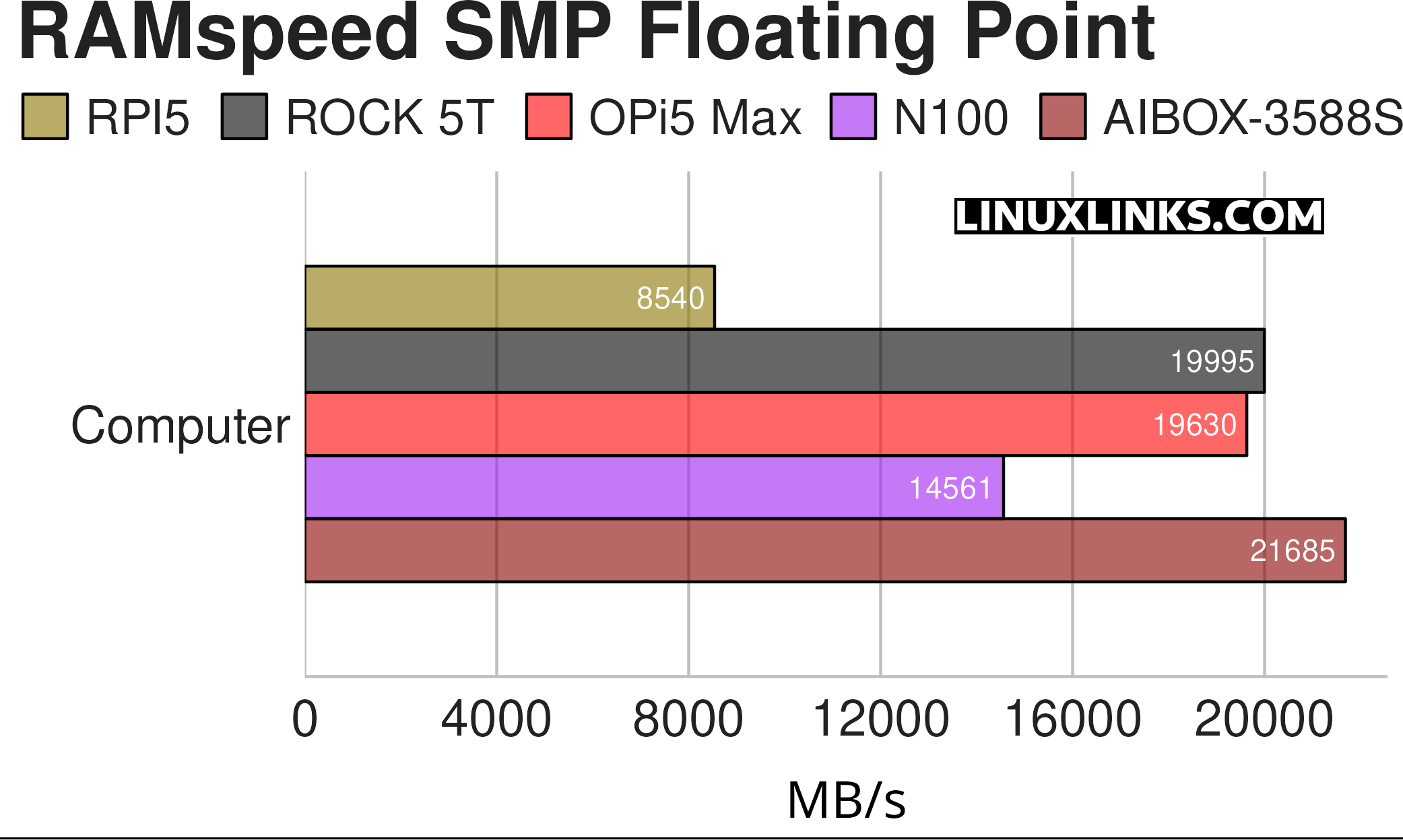
$ phoronix-test-suite benchmark ramspeed
In both RAM tests, the ROCK 5T puts up a good result helped by its DDR5 RAM.
It wasn’t possible to run every benchmark on each machine. For example, the RISC-V machines didn’t successfully run the RAMspeed benchmarks.
I’ve also run a few additional benchmarks on the ROCK 5T.
$ phoronix-test-suite benchmark openssl
OpenSSL is an open-source toolkit that implements SSL (Secure Sockets Layer) and TLS (Transport Layer Security) protocols. This test profile makes use of the built-in “openssl speed” benchmarking capabilities.
I’ve restricted testing to the RSA4096 algorithm.
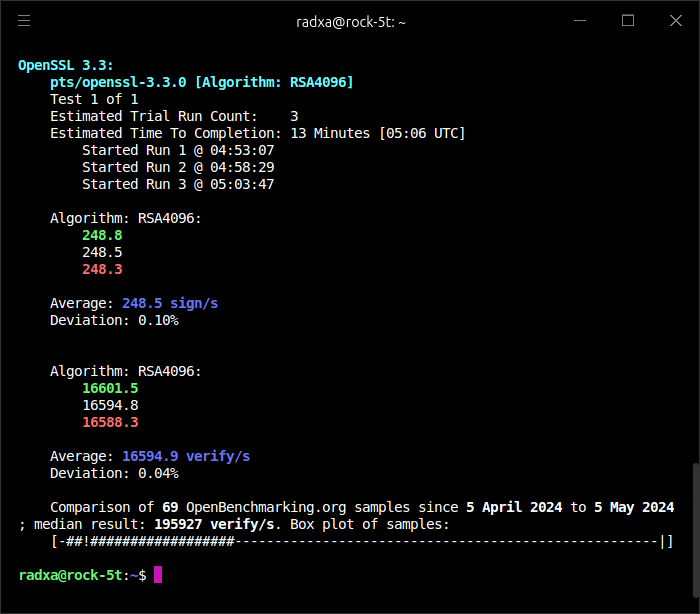
The ROCK 5T gets an average of 248.5 sign/s and 16594.9 verify/s which is slightly higher than the Firefly AIBOX-3588S, and more than twice as fast as the RISC-V based Orange Pi R2S.
$ phoronix-test-suite benchmark tinymembench
This benchmark tests the system memory (RAM) performance.
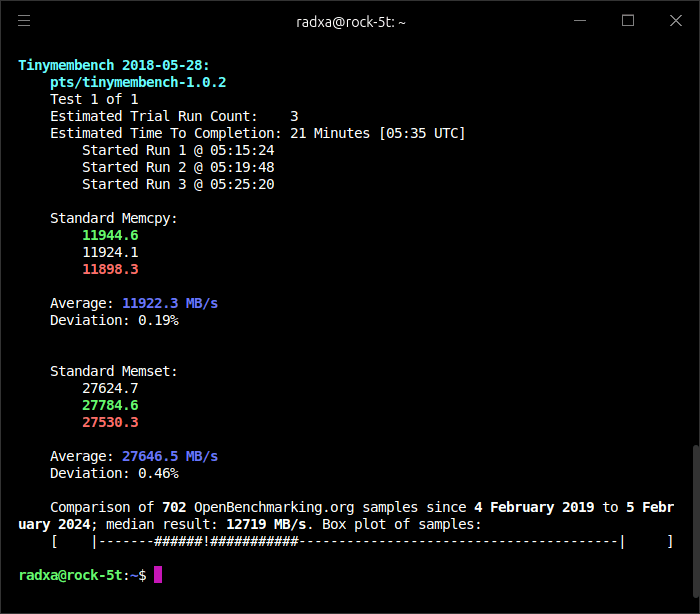
The ROCK 5T gets 11922 MB/s in the standard memcpy test, and 27646.5 MB/s in the standard memset benchmark. That’s slightly slower than the AIBOX-358SS which gets 13080 MB/s and 28421 MB/s respectively. Compare that to the Orange Pi R2S’s 2534 MB/s (memcpy) and 7175 MB/s (memset).
In the next article in the series I’ll test power consumption under a variety of workloads.
Complete list of articles in this series:
| Radxa ROCK 5T | |
|---|---|
| Introduction | Introduction to the series and interrogation of the ROCK 5T |
| Benchmarks | Benchmarking the ROCK 5T |
| Power | I compare the Rock 5T's power consumption to other machines |
| Radxa OS | A Debian-based Linux distribution with KDE Plasma |
